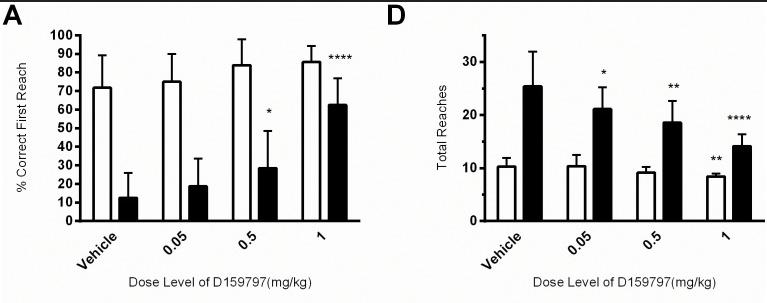BPN14770A
Pharmacology 
BPN14770 (AKA PBIO-4D) is a NAM (Negative Allosteric Modulator) of the phosphodiesterase 4 (PDE4) Enzyme with preferential selectivity for the PDE4D isoform. It achieves this selectivity by binding to a phenylalanine residue in the N-terminal region of the PDE4 gene that is only found in the PDE4D isoform in primates [2]. In a mouse with a humanized version of the PDE4 gene, BPN14770 was 46-fold more potent, and 730-fold more selective towards PDE4D relative to PDE4B, the other major PDE4 isoform in the brain [2].
BPN14770 has specific affinities for long-form variants PDE4D3 and PDE4D7. It avoids emesis caused by similar PDE4i's by avoiding other PDE4 targets and by avoiding the isoform PDE4D5.
https://pubmed.ncbi.nlm.nih.gov/30131563/

BPN14770 is the successor to D159687, and has improved potency, half-life (10-12+ hours?) and pharmacokinetics in general [4].
BPN14770 was generally found to have a good pharmacokinetic profile with a high oral bioavailability of 70-80%. Intranasal ROA may carry higher efficacy.
BPN14770 has a superior effect profile to rolipram [4], which is a commonly tested PDE4 inhibitor used in studies. Rolipram is not selective for the PDE4D subunit, and in addition, it is not a NAM, meaning it can have full inhibition which is less desirable and could cause emetogenic side effects and other issues.
BPN14770 is well tolerated, and has a much better side effect profile than most other PDE4D modulators. It recieves a substantial level of partial inhibition of PDE4D (Imax ∼80–90%).

The most effective dose based on evidence is 8-10mg Oral. Above may cause neuronal abarrance and may inversely affect mood. It may take multiple weeks for effect, and potency increases over time.
BPN14770 (3 mg/kg/day orally for 2 weeks) was found to improve behavioral phenotypes in a mouse model of Fragile X (male fmr1-/-). This was accompanied by changes to dendritic spine density and maturation in the cortex. Notably, the behavioral improvements persisted following a two-week washout period, suggesting that the drug has long-lasting effects. However, the improvements did weaken over time, indicating that the changes were reversible, and continuous use would likely be necessary for sustained benefit in a clinical setting. [3]
Sources
Related
No related nodes found